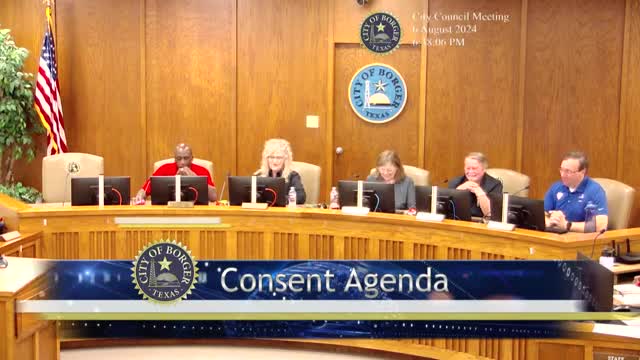City Council Proposes Record High Property Tax Rate for 2025
August 07, 2024 | Borger, Hutchinson County, Texas
This article was created by AI summarizing key points discussed. AI makes mistakes, so for full details and context, please refer to the video of the full meeting. Please report any errors so we can fix them. Report an error »

During a recent government meeting, officials proposed a combined tax rate of $0.6564 per $100 valuation for the upcoming fiscal year 2025. This proposed rate, which is the highest allowable under current regulations, is intended to generate the same revenue as the previous year, aligning with the no-new-revenue rate established by the Hutchinson County Tax Assessor Collector. A public hearing is scheduled for August 20, 2024, to discuss the proposal in detail, with a final action item set for September 3, 2024.
City officials have been preparing the budget for the next fiscal year, and the proposed tax rate marks a critical first step in the process. The council emphasized that this is merely a proposal and that the final adopted rate cannot exceed this figure.
In addition to the tax rate discussion, the council introduced an ordinance to amend the fiscal year 2024 budget, reflecting adjustments due to unforeseen events, including recent wildfires. The amendment anticipates an increase in revenue by $34,385, primarily driven by positive trends in sales and property tax collections. However, it also acknowledges a shortfall in solid waste collection revenue, attributed to a decrease in active water accounts.
The council noted that while overall expenditures are projected to increase, particularly in response to wildfire mitigation efforts, the budget remains largely balanced. The adjustments are expected to have a minimal impact on the overall budget, with a projected operating loss of approximately $200,000 for the first year of the new EMS transition, significantly reduced from an initial estimate of $670,000.
Further discussions included updates on various funds, such as the water and sewer fund, which anticipates a slight revenue decrease due to reduced water sales to a major client. However, the overall financial outlook remains positive, with expectations of a surplus by the end of the fiscal year.
The meeting concluded with a focus on upcoming projects and funding opportunities, including potential grants for hazard mitigation related to the recent wildfires, which could provide significant financial support for future drainage and flood projects.
City officials have been preparing the budget for the next fiscal year, and the proposed tax rate marks a critical first step in the process. The council emphasized that this is merely a proposal and that the final adopted rate cannot exceed this figure.
In addition to the tax rate discussion, the council introduced an ordinance to amend the fiscal year 2024 budget, reflecting adjustments due to unforeseen events, including recent wildfires. The amendment anticipates an increase in revenue by $34,385, primarily driven by positive trends in sales and property tax collections. However, it also acknowledges a shortfall in solid waste collection revenue, attributed to a decrease in active water accounts.
The council noted that while overall expenditures are projected to increase, particularly in response to wildfire mitigation efforts, the budget remains largely balanced. The adjustments are expected to have a minimal impact on the overall budget, with a projected operating loss of approximately $200,000 for the first year of the new EMS transition, significantly reduced from an initial estimate of $670,000.
Further discussions included updates on various funds, such as the water and sewer fund, which anticipates a slight revenue decrease due to reduced water sales to a major client. However, the overall financial outlook remains positive, with expectations of a surplus by the end of the fiscal year.
The meeting concluded with a focus on upcoming projects and funding opportunities, including potential grants for hazard mitigation related to the recent wildfires, which could provide significant financial support for future drainage and flood projects.
View full meeting
This article is based on a recent meeting—watch the full video and explore the complete transcript for deeper insights into the discussion.
View full meeting
